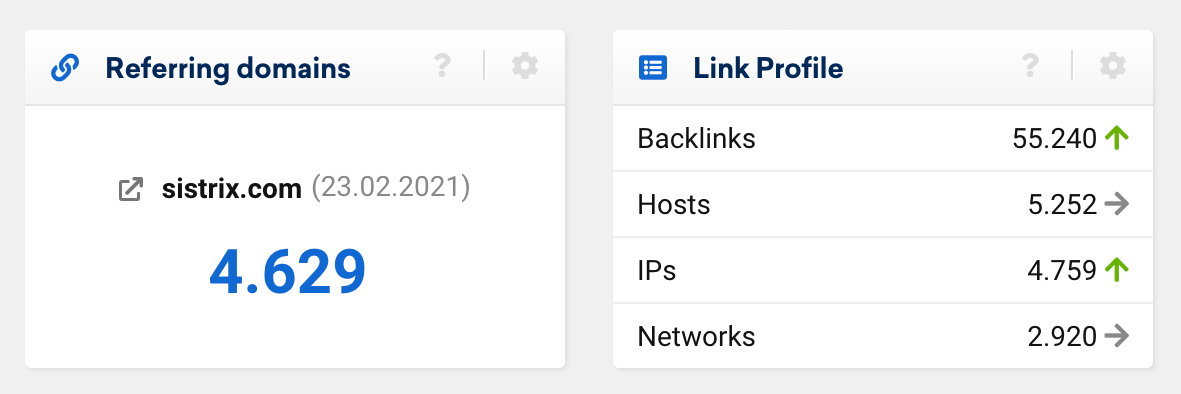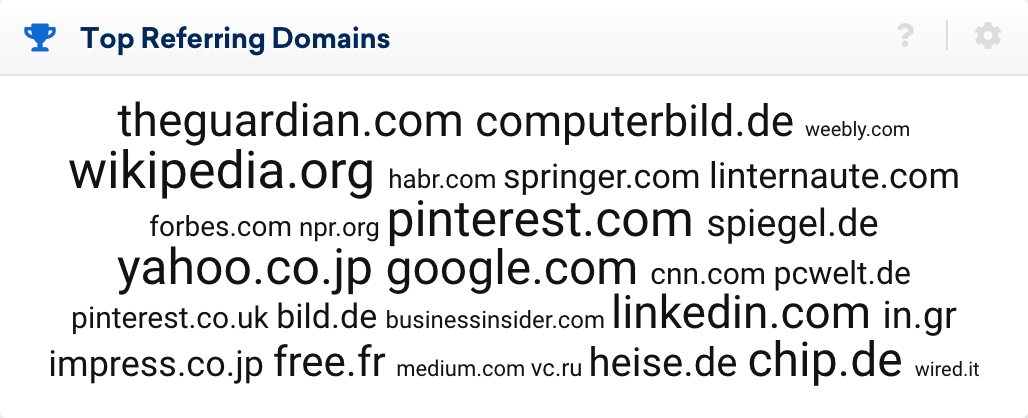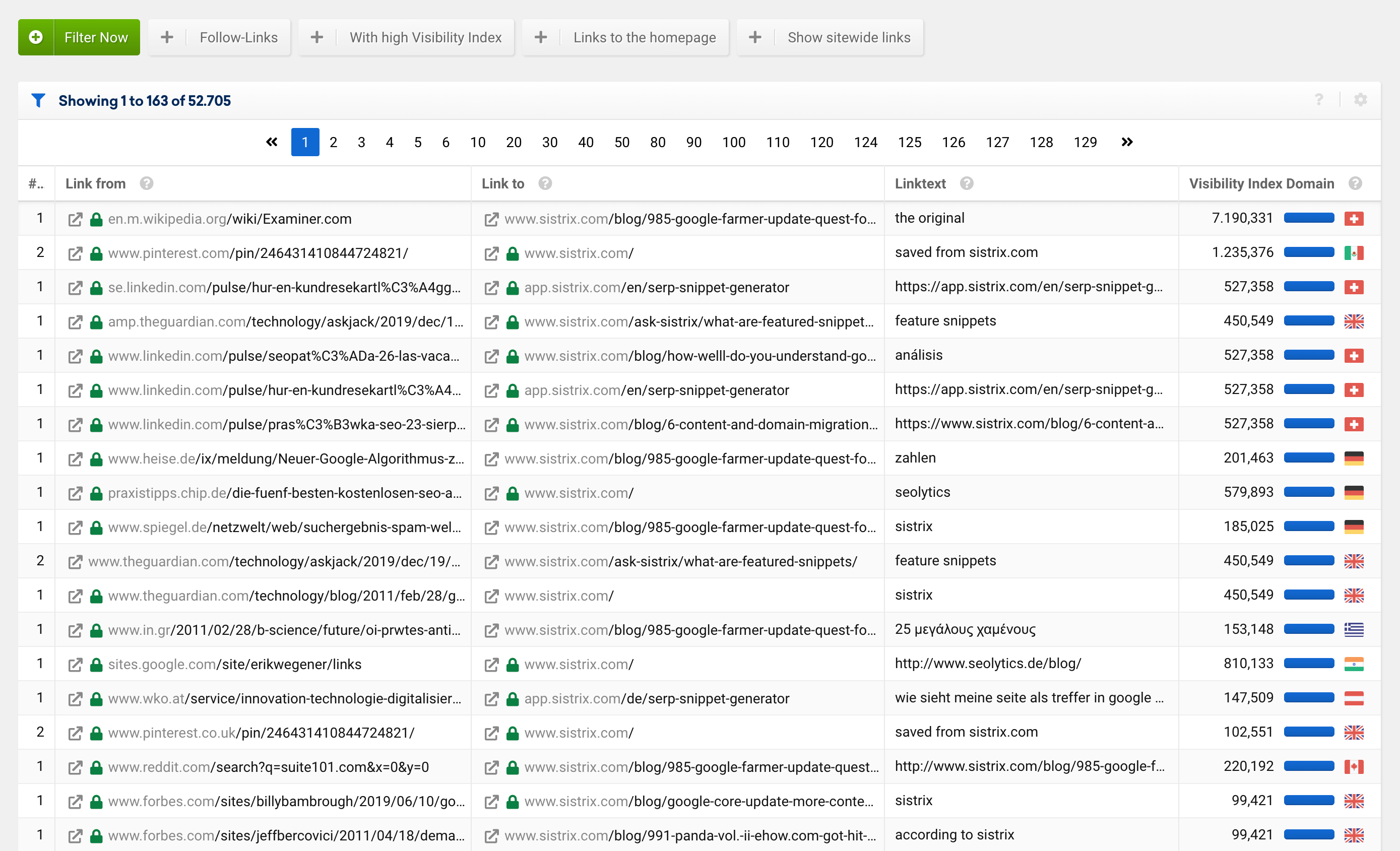While Google is conspicuously communicative about corporate ranking factors such as page experience, we hear far less about relevant ranking factors. However, we now have some helpful clarification on links.
Johannes Müller, Search Advocate at Google, spoke quite clear and unequivocally on the subject of links in one of the regular Google Search Central SEO office-hours (what a name!).
A participant asked: “What matters the most? The number of unique domain links or the total number of backlinks?” This was Johannes Müller’s response to the question:
“… I would tend not to focus on the total number of backlinks or the number of domain links because we [Google] look at links in a very different way. […] The total number does not matter at all. You could go off and create millions of links across millions of websites and we could just ignore them.”
English Google SEO office-hours from February 19, 2021 (Recording)
In the second part of his answer, Johannes Müller then goes into what matters for Google when evaluating links:
“…Or there could be one really good link from one website out there that is for us a really important sign that we should treat this website as something that is relevant. Maybe from a big news site’s homepage.”
English Google SEO office-hours from February 19, 2021 (Recording)
This confirms what Google has been saying in recent years: it is not the quantity but the quality of links that matters. Some time ago, Google also confirmed that links are among the three most important ranking factors.
From a search engine’s perspective, this is a comprehensive and conclusive treatment of the topic. From the standpoint of SEOs, however, the problems are only just beginning. The old Peter F. Drucker quote “If you can’t measure it, you can’t improve it” also applies to link building.
So here is my perspective on possible metrics for link building, their respective pros and cons and also their limitations:
- It has been clear to the entire industry for some time that the total number of links is not a suitable metric since it is too easy to manipulate through sitewide links. The following rule still applies here: the first link from a domain matters the most, each additional link after that matters exponentially less.
- The number of unique domains (domain popularity, dom-pop) is much better. However, this number can also be increased by artificial networks. IP or network popularity, which counts the number of unique hosting IP addresses and networks, is certainly better, but not entirely error-free.
- Google’s success was originally based on the use of the PageRank algorithm: pages that are frequently linked to by strong pages enjoy higher trust in the search results. However, Google has not published PageRank values for many years, so we cannot use them to assess quality.
- Providers such as Moz (“domain authority”) or Ahrefs (“domain rating”) try to reproduce this PageRank. As Google itself confirmed in the video, however, this will not work as only a part of all links is evaluated. And only Google knows which part. Reproducing PageRank is therefore doomed to fail from the very outset.
- Since reproducing PageRank will inevitably lead to incorrect values, we use another key figure for quality assessment in SISTRIX: the visibility index. The basic idea is that Google only grants visibility in the SERPs to trustworthy domains. These domains are therefore highly trusted by Google and links from these domains are correspondingly valuable.
- There are also domains whose internal PageRank (trust) on Google is high, but which only publish a small amount of content, meaning they have a low visibility in the SERPs. Our observation, however, is that the visibility is closest to Google’s assessment across all domains, since in principle there is no separate calculation in a parallel system, but rather a measurement of the Google results.
So much for the basics of available metrics. In practice, a quick (1 minute) evaluation of a link profile of a previously unknown website looks like this:
The number of linking domains – I first see the total number of unique linking domains. Although this key figure can be manipulated, it is much more difficult to do than for the total number of links. It also tells me what “weight class” the domain is in: does it only have a few links or are we talking about many thousands of different links? (10 seconds).

Sample linking domains – I then see the strongest of the linking domains. Here I can quickly see whether these are well-known and trustworthy domains from the respective market or whether they are domains I have never seen before (20 seconds).

Sample links with the highest visibility – now I see the links themselves. In SISTRIX, links are already sorted in descending order according to the visibility index in the default setting, so that I can quickly skim the presumably strongest links of a domain and get an accurate impression of the quality of the incoming links (30 seconds).

Links are and remain a complex topic. Apart from general and sweeping statements like in the video above, Google is rather tight-lipped and prefers to draw attention to technical topics or change requests (such as AMP). Nevertheless, links are currently still one of the most important external signals which Google can use to measure trust in a website.

